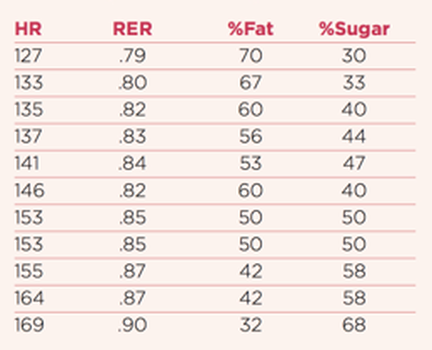|
In case you haven’t noticed none of us are driving this bus. We are just along for the ride more or less. I suppose it’s actually like much of life in that way only a more dramatic, pointed example.
I’ve been reflecting a lot on my own response to this. Thinking a lot about how I have responded, how I’d like to respond. In the moment and in retrospect. I know that I want to keep a clear head. I want to see things as they are and face each day/new reality head on. I know that I want to embody strength, love and happiness for my family and friends. I know that I want to enjoy as much of this surplus of time I get to spend with my daughter as I possibly can (and it’s a lot 😆). I know that I’m grateful for this profound shake up. There are reset buttons that needed to be hit in my life. Privileges that were being taken for granted. Time that was being wasted (always). Even as focused as I have been in the last few years on the precarity of our predicament on this planet, I STILL need to get my shit together and stop wasting time! Do the things that need to be done, see the people I need to go and see, get lost in the adventures I have been dreaming about. There are logistical and situational variables in my life and that of my family that we are fortunate enough to have a lot of control over. Some upcoming opportunities to rethink and restructure. To better reflect the values and intentions that events like this sharpen up like nothing else can. Will I leverage those? I’m planning on it. What use is an event like this if you don’t mine every silver lining you possibly can out of it? What choices/behaviors are old, tired and negatively impacting your life? Which positive alternatives are waiting to be embodied? How will you respond, which path will you choose? Thinking of you guys and your loved ones. Wishing you a mindful, reflective and positive Monday. Stay strong. Onward! Ian
1 Comment
 Who knows exactly how this thing is going to shake out. Although I think we are starting to get a sobering picture from an epidemiological perspective... I heard the term “dress rehearsal” yesterday on a podcast with an MD/Infectious disease specialist out of Johns Hopkins. I think we would be wise to regard it in that way. This is a chance to understand the absolute imperative of having our shit together around prevention and all that follows from pandemics. 1 Million+ Americans dead from Coronavirus will seem like a happy dream when a real killer comes along... Americans are sick. REALLY sick. If it sounds like I run down the hall pulling fire alarms around this topic it’s because I am! The pathologies of metabolic dysfunction and the death of movement have rendered this country easy pickings for all manner of catastrophe. Talk to the pentagon about their concerns regarding the state of health of the populous... It’s a national security disaster. At any rate, it’s a great time to be healthy :). We never know what life has in store next. Communicable disease is the Hollywood example of why we train. Why we choose an alternative path when it comes to food and lifestyle. My clients know full well the emphasis I place on these things, they have an entire resource page full of content dedicated to it. The vast majority of our health, our resilience, comes as a result of the decisions we make daily OUTSIDE THE GYM. Around sleep, around food, around how we deal with and mitigate stress. Keeping a clear mind (for instance: minimizing poison intake measured in ounces or pills, eating for cognition, practicing some form of meditation and living an examined life) and a strong body are non-negotiable. So let’s get down to business and keep ourselves strong, sharp and healthy so we can be RESILIENT. So that we can take care of our loved ones and continue to play a role in caring for and participating in our larger communities. Forward...  If you haven’t read Dr. Mark Hyman’s book, Food Fix, I highly recommend it. Check out this great conversation on Peter Attia’s The Drive podcast for an extended preview... https://peterattiamd.com/markhyman/ Western, reductionist thought and methods have delivered an almost surreal level of abundance and wealth to humanity, especially to the developed world. The protocols that follow have produced previously unimagineable quantities of food. In 2020 we are crashing headlong into it’s limits and reaping the myriad unintended consequences of that paradigm. The modern food system and policies around production and consumption are yielding a global climate/environmental crisis and perpetuating a population of humans with metabolic pathology like never before. America is the fattest, sickest (chronic disease) country on the planet. In a world with infinite connection, interdependence and interrelation we have to progress to systems based thinking and application to ensure our continued efforts and success. There is SO much important information here that the public needs to understand. From the deep and pressing need for a revolution in our food production system and policies around food, to the great lie of the “energy balance” narrative put forth by the mega food companies. Learn where to source better food, fundamental concepts for healthful eating and what you can do to help change these things for the better. Even if only through the power of the dollars you spend. If you find this interesting make sure you checkout the conversation below on the Healthy Rebellion Radio with Will Harris of White Oak Pastures farm. It is an eye opening story around success and the re-enrichment of rural America. https://robbwolf.com/2020/02/21/guest-interview-will-harris-of-white-oak-pastures-thrr017/  “Modern humans are physiologically better adapted to exercise intensities similar to ones their hominid ancestors evolved with rather than those supported by modern societies.These would have included daily bouts of prolonged, low-intensity, aerobic-based activities, which are primarily fueled by the body’s long-term energy source: fat.” - Phil Maffetone We may have miscalculated folks. It is ever more apparent that HIIT, work in excess of 75% VO2 Max, high volume training protocols (think many thousands of reps/group functional fitness) and general glycolytic work comes with a host of unintended, unwanted consequences for many of it’s adherents. Much of the metabolic magic, for what I call us “normies”, appears to reside in the “easy” stuff. Specifically what I’m calling Zone 2 work with my clients. Let’s work backwards for a second. What’s the problem with HIIT, high intensity cardio and group functional fitness? Here are a few of the issues... 1. Substrate Utilization Generally speaking the more intense the effort becomes the more your body needs to burn sugar to fuel the metabolic engine and the LESS it is able to utilize fat as fuel. Below is a chart from Phil Maffetone’s site showing a progression of fuel utilization from less intense to more intense effort. Now, mind you, these figures are for a seasoned athlete capable of running a 5:25 mile. For the rest of us mere mortals you can bet the numbers are less optimistic. Which is to say you should slide everything backward in your mind and realize that it will take an even lower heart rate for you to burn the same amount of fat that the above individual burns at any given output. The more volume of high intensity sessions you accrue and the less low end aerobic work you do, the more you will be more predisposed to burning sugar at lower intensities/BPM. Whether you know it or not, this is precisely the effect you DON’T want your exercise to have on your metabolism. 2. The Viscous Cycle Most folks are obligate sugar burners by virtue of their diet and lifestyle choices. They likely may never realize 70% fat utilization in their current condition. This is to say they are not metabolically healthy or flexible. Although we don’t typically refer to training protocols as “lifestyle”, in a way of course it's a lifestyle choice. The same individuals that are not lean and/or are not metabolically healthy, also choose to fill their training time with high intensity aerobic or glycolytic sessions. In this case the majority of their “workouts” demand sugar/carbs while the brain turns a blind eye to fat (that pesky ring around the belly). And because of that intensity, guess what food substances they are left craving to fuel those efforts once they get home? More sugar and carbs of course. Ever look around a functional fitness gym and see a room of faithful devotees, flogging themselves with intense exercise on a daily basis, that carry that same pesky ring around the belly? They can’t seem to lean out...I’ve seen it for years. Although we tend to focus on the beautiful people (chiseled like Spartans), they are largely outnumbered by the former, by the general population. This begs a question around alignment. Do your goals, food choices, lifestyle and training align well? 3. The Price of Admission Those high intensity sessions come with a host of consequences that are wildly unpopular to mention in online pop fitness ramblings, mags, tv etc. Free radicals and accelerated aging, hormone dysregulation, accelerated degradation of joints and connective tissue (think many thousands of reps done with no basis in the first place across functional fitness group classes the world over), and the previously mentioned viscous cycle issue with all of the accompanying metabolic damage that comes with it. Consider the average devotees activity profile, it lacks a transition, a buffering effect. It looks like a richter scale for the most part. Which is to say 0-100 in not time flat. People are almost totally sedentary 90% of the time, then they walk into a gym and redline themselves for their exercise session. Then back to sitting. Almost nothing in between. Try operating your car like that... It's a problem. I’m not going to try and make some airtight scientific case here, you can go on PubMed, NCBI and other sites and try and make some sense of all this yourself. Suffice it to say I’ve watched it play out many times over the last 12 years of my career. I’ve personally paid a price for my early years of not being in the know around some of this and I’m certain many former clients and zealots have as well. You don’t need a double blind, randomized, controlled study (keep holding your breath for that ;) to verify something you have witnessed first hand, many times, over time. Many are there for the “hit”. This is exercise as a drug. Others are there presumably because they think metabolically intense efforts are the best way to get what they want, namely to look good naked. Others for communion or perhaps for the suffering. Which is understandable. Whatever the case, the collective is logging a lot of volume of the wrong sort, a lot of intensity and paying a price they don’t fully understand while doing it. Unknowingly sabotaging their goals/results along the way is just a slap in the face as a bonus. Once that price has been sufficiently exacted, whether it is fully conscious or not, people realize that the path they're on is not sustainable. There is no ALIGNMENT between who they are, how they live, what they want and their training protocol. Then they jump ship. Often times they are at a loss for what to do next (insert latest "intense" exercise fad here or maybe a total bail out on any decent strength work moving forward). Often they are broken in 1 or more ways from too much intensity, too often, prescribed way too soon. They may be feeling bummed about their "failures" or their inability to continue with an exercise regimen they thought was on point. So, is there a better way for the masses? Obviously I’m arguing the answer is a resounding “yes”! And I’m calling it “Zone 2” work. Doesn’t matter what you call it, just so long as you know what it is, why you should be devoting your time and energy to it and how to effectively execute it. Remember we are only talking about metabolic work now, not strength work. Strength work is the most essential piece of a training program IMO and should run concurrently with any metabolic efforts. As should a robust mobility/stretching program. I digress. Back to Zone 2... What is it? Let’s call it cyclical work somewhere between 60-70% (max HRM), an imperfect parameter, but more or less. This of course varies from individual to individual. Often drastically. It’s important to be honest in every regard when assessing where your own Zone 2 likely is. Basically, the more deconditioned, in poor health or older you are the lower your BPM will need to be (at least initially) to approximate this zone. Metabolically healthy individuals and people that are more aerobically conditioned will be able to hit this sweet spot of training at higher BPMs. Why should this constitute a majority or appropriately large percentage of my training time? Here are a few reasons: 1. When we activate the Type 1 muscle fibers using Zone 2 work we stimulate mitochondrial growth and function. Many of the sharpest minds in medicine, physiology and health are well aware that the mitochondria and their function appear to be the foundation of our health, longevity and athletic performance. Conversely their lack of function and vigor appear to be deeply tied to the most serious pathologies of our time. Zone 2 training currently seems to be THE method for fostering our mitochondria. Certainly in Type 1 fibers anyway. 2. Through Zone 2 training you MAXIMIZE your body’s ability to use fat as fuel. Not only during the session but also while at rest. This is a/the cornerstone of metabolic health. If you fancy improving your performance in any kind of endurance sport, you also train your body to spare all that glucose until such time as you really need it. In this way, you hedge against the “bonk”. You are making yourself less prone to bonking relative to the you that did not dedicate sufficient time to Z2 training. 3. You improve your body’s ability to clear lactate. Also a kind of holy grail when we talk about athletic performance. Both in endurance work but also over the domain of shorter, more intense glycolytic efforts. 4. Doing Z2 work can be regarded as the definition of building a strong “aerobic base”. 5. It is the most APPROPRIATE work for the greatest number of people who exercise. Here’s the cold, hard truth: most of the population is BROKEN. For example, the CDC reports that 84 million Americans have Pre-Diabetes, that’s more than 33%! If they continue on the path they’re on, and I would argue that is far and away the most likely outcome at present, they will have Type 2 Diabetes sooner or later. And it’s all downhill from there for most. BTW, Type 2 Diabetes is a disease of food and lifestyle. It’s the pinnacle of a carbohydrate/sugar based metabolism. Can you see the link when considering the viscous cycle I wrote about earlier? Is a protocol of intense exercise for these people really the most intelligent design? Even if they can do it, sort of? If we lump the whole of Americans who demonstrate the hallmarks of metabolic syndrome in there the numbers get even worse. And then there’s the mundane. People are way under slept and under rested, over worked, over stressed, have poor mental health and are generally in a bad place physically. They're bound up and broken down. They’re on pills, Rx’d or over the counter, using alcohol in copious amounts and have all kinds of structural problems and injuries. They have no basis for and no resiliency to the HIIT and Metcons they are subjecting themselves to day in and day out. The beauty of Zone 2 is that it takes very little from you other than time. It doesn’t beat you up! And it does not require or make you crave large amounts of sugar and carbs in the way that high intensity sessions do. It does optimize your metabolism to burn to fat, provide the foundation of your aerobic base and improve your lactate clearance. Additionally it can be a better choice for the majority of sessions for folks who need to get more parasympathetic (read damn near everyone). How do I effectively train this energy system? Currently I use Maffetone’s 180 Formula in my own training and for my clients as well. We do testing at the precise number arrived at by the formula and prescribe cyclical work up to that number but often lower. If you know of a more precise way of discerning your heart rate for this work, outside the lab, I’d love to know it. Anyhow, you can calculate it yourself by subtracting your age from 180 and then making the fine adjustments contained in the links to maffetone's articles at the bottom of this post. Once you have what I would call your top end Rx BPM you need a decent heart rate monitor. A chest strap or the next gen arm bands are probably the best choice. Find yourself a cyclical machine (stationary bike, rower, treadmill etc.) and log some time between 10-15 BPM lower than the 180 Formula and up to that number. *It’s important to understand there are numerous “formulas” for isolating “Zone 2”. They are all imperfect. I like Maffetone’s the best so far for the general population. If you compare it to the standard 220-Age x .6-.7 method, you’ll see it may shake out closer to 70-75%. Hence my recommendation for doing work down to 15BPM lower and topping out/testing at the 180 Rx. Over time you will get a good subjective feel for just where your Zone 2 is and the level of exertion that it entails (surprisingly low for many fitness enthusiasts). Then, when you don’t have a heart rate monitor, you should be able to reproduce a very similar effort in less perfect conditions IE a casual bike ride, walk, hike etc. Subjective measures of this effort are commonly associated with being able to pass the “talk test”. When doing Z2 work you should be able to hold a conversation. The pace is continuous, stable and indefinite? with good blood flow and breathing. As far as the minimum effective dose and frequency, I think the jury is still out. Currently I am going with 2x week for at least 30 minutes. A better recommendation is probably 2-5 hrs/week. I’m sure it varies by individual. But you gotta start somewhere. Much of the impetus behind that particular minimum simply has to do with the scarcity of time. Busy people in 2020 have none. So again, it’s just a starting point to build familiarity and consistency. You can devote more time from there. Zone 1 It’s worth mentioning Zone 1. If we view this as a pyramid, Zone 1 is the foundation. Easy movement. Walking for instance. Some folks, very sedentary types, will have no business doing Z2 work initially. They hardly move at all. They may represent a small percentage of this articles readership but they represent a significant portion of Americans. So they need to begin with Z1. If Z2 allows you to have some level of intensity while still being glycogen sparing, Z1 may be the ultimate in terms of requiring virtually no sugar. A healthy individual on a ketogenic/very low carb diet should be able to do Z1 all day with no real cravings or necessity for dense carb and sugar sources. And what of intensity? You wanna do it anyway? Go for it. But first...
If you’re an athlete that regularly competes for points and medals, that’s a different story. It’s not to say that there’s nothing of value in this post for you but of course athlete’s do what they need to do to win. And the smart ones KNOWINGLY accept the cost of that choice. In closing I’ll say that of course there are going to be positive adaptations that result from intense metabolic training. And for competitive athletes (individuals who regularly compete at the amateur/pro level) it’s essential for peak performance. However, it is hardly the panacea it has been made out to be when it comes to the gen pop. In fact it’s often wholly inappropriate when you consider who they are, how they live and what they really want. When you combine that fact with the physical and metabolic costs of running an “intense” training protocol ad nauseum for years on end, you get sub optimal results, to say the least. Perhaps it’s time to rethink the template for the great majority. To create something that is more in ALIGNMENT with the needs of the many. With that I’ll leave you with a salient sentiment from one of the masters of strength... “ A training session should give you more than it takes out of you.” - Pavel Tatsouline *Here are links to the references above: https://philmaffetone.com/maf-180-personalizing-exercise-heart-rate/ https://philmaffetone.com/the-180-review/ (an update to the method above) https://www.trainingpeaks.com/blog/zone-2-training-for-endurance-athletes/ Also, for a deep conversational dive on some of this check out Dr. Inigo San Milan‘s conversation with Peter Attia on “The Drive” podcast: https://peterattiamd.com/inigosanmillan/ The answer is you don’t.
But MANY people are trying. I would say that the majority of people are willing to “endure” or “suffer through” some form of exercise often times long before they are willing to take a hard look at their food and the other things in their life that are standing in the way of leaning out/losing weight. This is a DEEP rabbit hole. We have sooooooo many issues around food and reward and deprivation and comfort and habitual response etc. Trying to get someone to make significant changes to their food profile and lifestyle is one of the most difficult tasks I can think of. It’s WAY harder than getting them to work out. As a coach I have heard many times, “I do this stuff so I can eat and drink whatever I want”. And to be honest, these people deserve credit for knowing exactly what they are doing in the gym each day. There was no ambiguity when they told me this. They are adults and at the end of the day we can all do whatever the hell we want. However, a lot of these same folks have probably wondered at some point why they can’t seem to get rid of that sugar belly/ring around the middle despite hitting the gym on a regular basis. Or why they still have energy crashes during the afternoon. Or why their performance in the gym or elsewhere is not improving or even seemingly on the decline despite their regular attendance. Here’s the deal: your food and lifestyle constitute the VAST MAJORITY of the way you look, feel and manifest health and wellness in general. That’s it. “Working out” is not nearly as important! I train people in the gym for a living and I’m telling you that is the absolute truth of the matter. If that stuff is not in order and on it’s way to a better place you are largely pissing into the wind with all the exercise you are doing and perhaps doing actual damage. Especially for “chronic exercisers” or those subject to compulsions around exercise. Think about that for a while… |
AuthorIan Starr Archives
April 2020
Categories |



 RSS Feed
RSS Feed